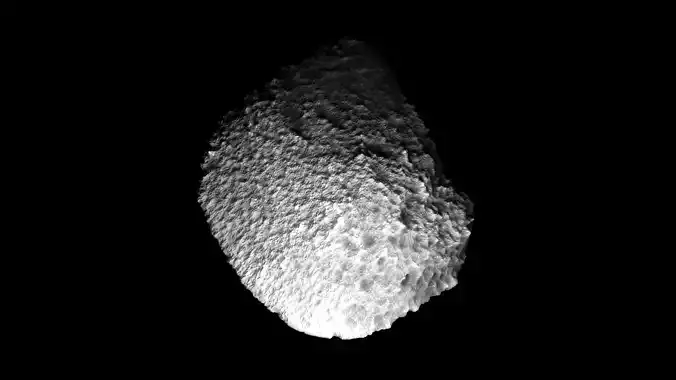1/13
DescriptionProteus Moon, also known as Neptune VIII, is the second-largest Neptunian moon, and Neptune's largest inner satellite. Discovered by Voyager 2 in 1989, it is named after Proteus, the shape-changing sea god of Greek mythology. Proteus orbits Neptune in a nearly equatorial orbit at a distance of about 4.75 times the radius of Neptune's equator. Despite being a predominantly icy body more than 400 km (250 mi) in diameter, Proteus's shape deviates significantly from an ellipsoid. It is shaped more like an irregular polyhedron with several slightly concave facets and relief as high as 20 km (12 mi). Its surface is dark, neutral in color, and heavily cratered. Proteus's largest crater is Pharos, which is more than 230 km (140 mi) in diameter. There are also a number of scarps, grooves, and valleys related to large craters. Proteus is probably not an original body that formed with Neptune. It could have accreted later from the debris formed when the largest Neptunian satellite, Triton, was captured. Proteus was discovered from the images taken by the Voyager 2 space probe two months before its Neptune flyby in August 1989. Proteus was discovered 40 years after the discovery of Neptune's moon Nereid in 1949. Upon discovery, Proteus received the temporary provisional designation S/1989 N 1. Stephen P. Synnott and Bradford A. Smith announced its discovery on July 7, 1989, speaking only of 17 frames taken over 21 days, which gives a discovery date of sometime before June 16. On 16 September 1991, S/1989 N 1 was named after Proteus, the shape-changing sea god of Greek mythology following the convention that moons of Neptune should be named after deities and creatures related to the sea. Proteus orbits Neptune at a distance of approximately 117,647 km (73,102 mi), nearly equal to 4.75 times the equatorial radius of the planet. The orbit of Proteus is nearly circular, having a small orbital eccentricity, and is inclined by about 0.5 degrees to Neptune's equator. Proteus is tidally locked to Neptune, and rotates synchronously with its orbital motion, which means that Proteus always presents the same face to Neptune. Proteus may have once been in a 1:2 orbital resonance with Larissa, where Proteus made one orbit for every two orbits made by Larissa. Due to the outward tidal migration of Proteus over time, this is no longer the case. Proteus may have ceased its integral orbital resonance with Larissa several hundred million years ago.
Texture Resolution: 836 x 840
REVIEWS & COMMENTS
accuracy, and usability.













